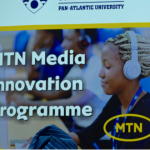Given its ubiquitous nature, it stands to reason that technology would eventually make its way into the classroom. This is a trend that we have been seeing for a while now, with the advent of devices such as the Smart Board, but the speed of transition has picked up. There are more and more ways that teachers are incorporating technology into their classrooms, which is impacting the way students learn. Studies have shown that due to the growth of technology in their lives, the current generation of students actually thinks differently. The use of technology in the classroom is working with this way of thinking, rather than against it.

There has been a shift from software to the use of web-based technology. Many university textbooks, for example, offer the use of extra material on their websites with the purchase of the book. Web-based technology has several advantages over software, not least of which is the ability for the vendor to update it as needed, rather than requiring expensive uploads. This type of technology is always changing, so it will not become obsolete as quickly as software programs often did. There are also websites that offer such services as interactive learning games, extra assignments, and quizzes to help students understand the material.
Young people nowadays have a wide array of technical devices: smart phones, laptops, iPads, iPods. Many of these devices use apps, and there are many educational apps available. Teachers are taking advantage of this fact and using apps to help plan and enhance their lessons, while also allowing students to use their devices and apps to help their learning. Technology is not a distraction for most students, it is a huge part of their daily lives, and being able to incorporate that into their learning is a powerful tool.
Another trend that is beginning to emerge is that of free or cheap online courses. There are several sites, such as iTunes U and Coursera which offer free courses for anyone who cares to take them. There are single lectures, courses or in some cases, full degrees available to be completed online, often offered by such prestigious institutions as Stanford and MIT. Online courses such as these have several advantages, including the ability to see how another instructor presents the same material and the ability to learn information and take classes that may have otherwise been out of the question (Stanford and MIT are not cheap schools!). Anyone can take these courses: a junior high student can take an introductory university course if they are so inclined! Free courses can help students determine what their interests are and create the desire to learn more.
The advent of online learning has also resulted in the availability of online tutoring. There are websites that offer these services to people all over the world, and it removes the need to even have a corresponding schedule or meet up in person. Tutoring websites often integrate online learning tools such as extra assignments, games, and lectures, allowing students to get the help they need faster and more efficiently.
With the use of lecture videos and other online learning tools, we have seen the emergence of what are known as “flipped classrooms”. In these classes, students learn the material at home, through readings or DVD lectures. Then, when they come to class, they do the work related to the lesson. This allows the opportunity for more collaboration between students and with the teacher, as well as allowing teachers the time to work one-on-one with students who would benefit from extra attention. Online tools such as Facebook, Twitter, and web chats make it easy for a teacher to make themselves available in the evenings for any questions or concerns students might have.
Another way that video and chat technology, such as Skype, can contribute to a lively and involved classroom is in the way that it connects a class to the rest of the world. If a teacher is so inclined, he or she can take the time to contact teachers and experts all over the world to set up interactive lessons. This practice helps to expand the students’ worldview by exposing them to people from around the world, and letting them interact with experts that they otherwise would not have had the opportunity to learn from. This is a great way to get the students involved with the world and to enhance the classroom culture and experience.
There are plenty of ways to use technology in the classroom, with many new and exciting trends growing stronger all the time. It is inevitable that technology will make its way into the classroom, but for the current generation of students, this is a great thing that will help them learn better. Embrace it!
Author Bio: Lena Paul is a medical school graduate who is an enthusiastic blogger and holds an editorial position in Prepgenie, a test prep provider that offers exam preparation courses for GAMSAT, PCAT, LNAT, UKCAT and UMAT.









